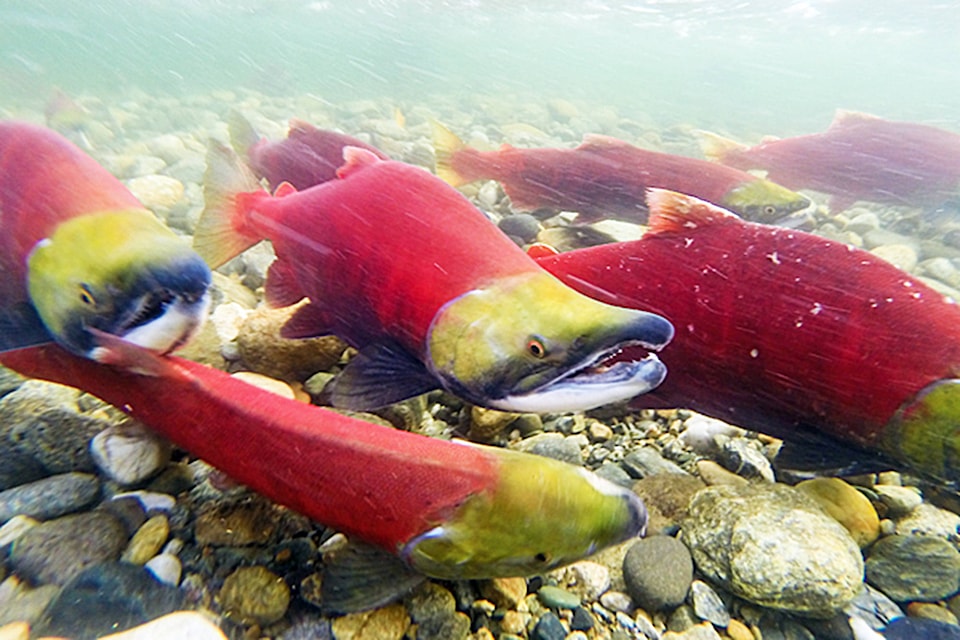A plan to restore the Upper Adams River sockeye salmon run will be put into effect this spring.
After much work and negotiation with the federal government, the Adams Lake band was able to secure support for a four-year project intended to bring back the Upper Adams run, which the band said collapsed over a century ago as a result of logging and splash dams as well as other factors.
“The salmon that returned to the Upper Adams River and Adams sustained our community for thousands of years and it is imperative that we see this run returned to its former glory,” commented Adams Lake Kukpi7 (Chief) Cliff Arnouse in an announcement about the project in January 2020.
The project began last year with the collection of data. Starting soon, and taking place over the next three years, Adams Lake will be fertilized with specific mixture of nutrients including nitrogen and phosphorus.
Overseeing the project, registered professional biologist Don Holmes of Lakeside Environmental said these nutrients, critical to fish growth, were once provided by the dead salmon flushed back into the lake after they spawned and died. With the collapse of the Upper Adams run, however, the lake wound up becoming ultra-oligotrophic – essentially devoid of the nutrients needed for sockeye fry and smolts to grow.
“The theory is, if we can get the sockeye fry and smolts larger, they have a much higher success rate when they head back into the ocean,” said Holmes.
Read more: Adams Lake First Nation heads program to restore salmon habitat in Adams Lake
Read more: Adams River Salmon Society seeks to bar wading trout anglers from Shuswap park
Formerly a biologist with the Ministry of Environment, Holmes explained the fertilization process is not new, and when done properly, and under rigorous scientific oversight, it has proven to be effective and safe.
“If we bring (the Upper Adams run) back, we’ll quit fertilizing because the fertilizer will be present in the bodies of the salmon carcasses of the adult spawners.”
The fertilizer will be applied near the middle of Adams Lake so it can be utilized by phytoplankton. Holmes said this is different from the nutrient loading that occurs around the periphery of Shuswap Lake, coming in from septic systems, streams and land-use activities in the watershed. Holmes said these nutrients are utilized along the shallows by periphyton, a mixture of algae, cyanobacteria, heterotrophic microbes and detritus attached to the rocks. The nutrients never make it to the middle of the lake.
“It’s really critical where these nutrients enter a system,” said Holmes. “Where they enter the system determines what utilizes it.”
The end goal is to make the Upper Adams salmon run self-sustaining. But Holmes warned there are factors outside the project’s control, including what happens when salmon leave the lake.
“If a returning run is wiped out it’s all for not,” said Holmes.
Holmes said data collected over the next three years will be shared with project partners including B.C.’s Ministry of Agriculture, Food and Fisheries; Ministry of Environment and Climate Change; Secwépemc Fisheries Commission; Okanagan Nation Alliance; and Fisheries and Oceans Canada.
@SalmonArm
lachlan@saobserver.net
Like us on Facebook and follow us on Twitter
